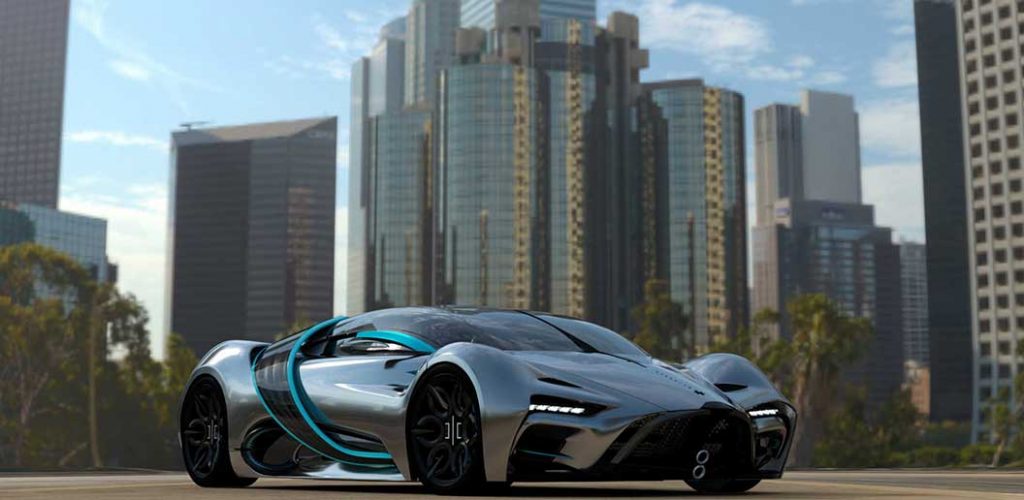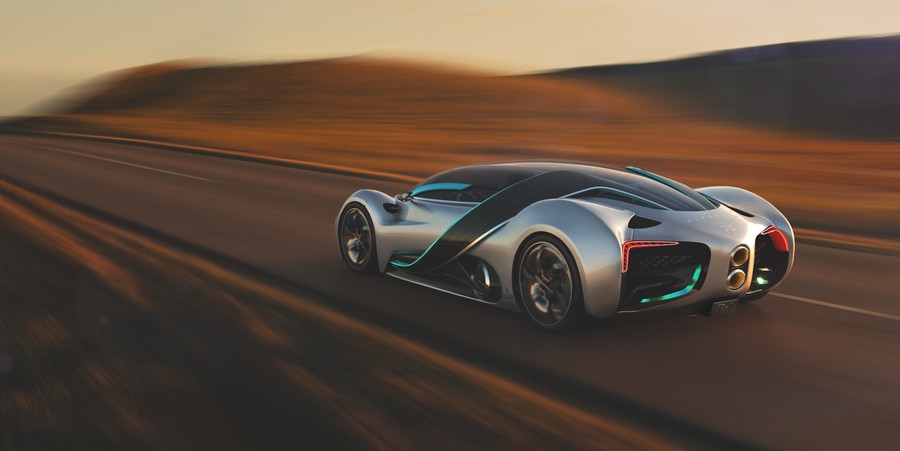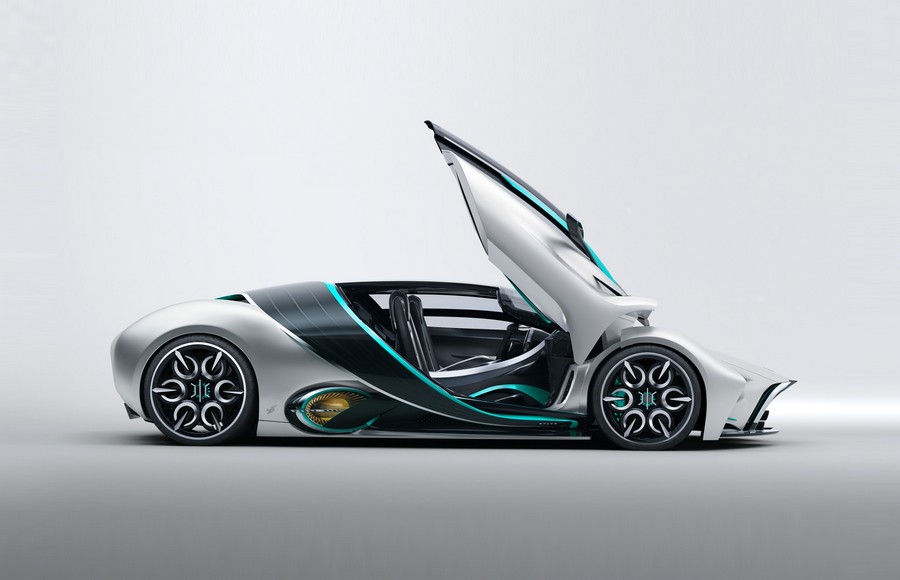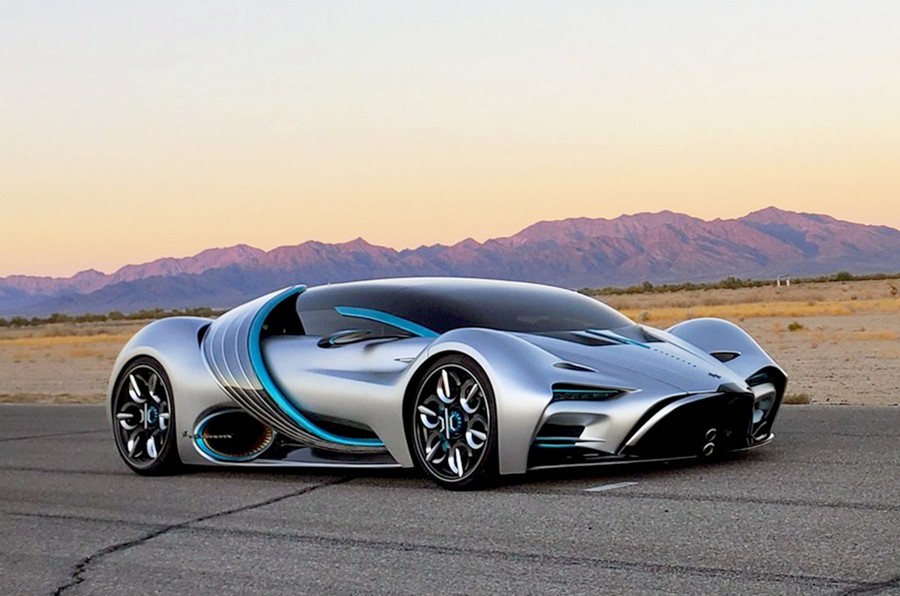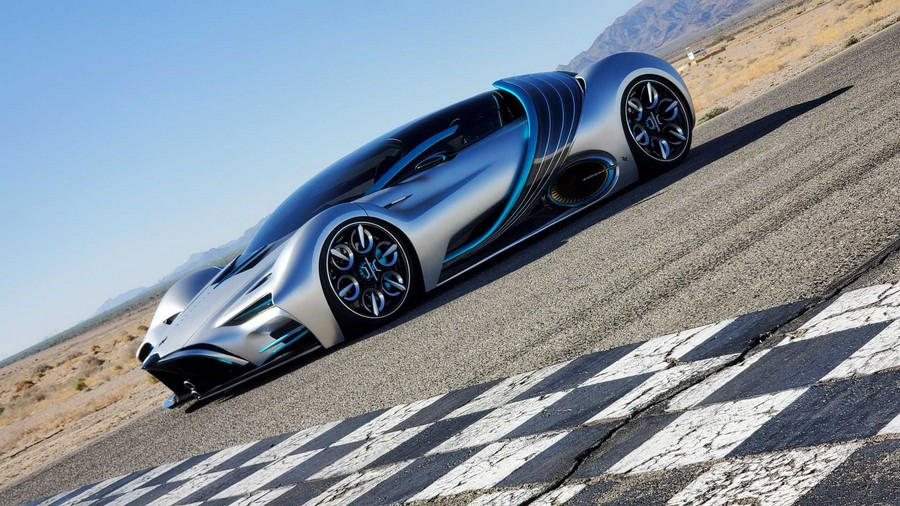Angelo Kafantaris, CEO of Hyperion doesn’t think his company’s Hyperion XP-1 is a huge deal. That might seem like a peculiar view, coming from the man that sits at the top of a company that’s debuting a 355 KM/h exotic car after nearly a decade of development. But the XP-1, with its claimed 2.2-second zero-to-97-km/h time and carbon titanium monocoque chassis, is akin to a signal flare blasted skyward to draw attention to a less sexy but vastly more important topic: energy infrastructure. Specifically, hydrogen, which is what the XP-1 uses for energy storage in lieu of a battery. “There are enough car companies,” Kafantaris says. “We’re an energy company that’s building this car to tell a story.”
And the story with hydrogen, right now, is that it’s a regional oddball, an offbeat option for Californians who want to out-tech their Tesla-driving neighbors. The benefits of hydrogen have always been clear—quick refueling and an essentially infinite supply, assuming you have a source of electricity to crack off your H atoms. The drawbacks are infrastructure and expense. Most of us don’t live anywhere near a hydrogen filling station.
Hyperion plans to address the infrastructure problem first, building its own fueling stations in something akin to Tesla’s Supercharger network. Except Hyperion won’t need as many stations, because Hyperion says the XP-1 offers more than 1000 miles of range (1,635 Kilometers, at a mix of 55 percent city and 45 percent highway driving). Squeezing more range out of batteries is an incremental process; to double the range of a fuel-cell car, you just use a bigger tank. That’s just one of the advantages that Kafantaris hopes will help convince the general public that hydrogen is the best battery out there.
Representing a massive leap in personal transportation and sustainable hydrogen power, the XP-1 features a high-performance, zero-emissions hydrogen-electric powertrain combined with technology directly derived from some of the world’s leading aeronautical, engineering firms, and space agencies. When combined, these technologies allow the XP-1 to outperform modern sports cars while boasting unprecedented range, refuel time, endurance, and recyclability; especially when compared to today’s battery-electric vehicles.
“Hydrogen gives you all the benefits of electric power with lower weight,” Kafantaris says. “You could race it, because hydrogen doesn’t care about heat. And you can make hydrogen from excess grid solar power. Creating hydrogen is greener than making batteries.” Hyperion quotes the XP-1’s curb weight at less than 2275 pounds, a number in line with the most feathery of internal-combustion sports cars.
But what about safety? Kafantaris says that’s a solved problem. “You can throw our tanks off a building or shoot them with a high-powered rifle. They won’t rupture.” But they are expensive, using plenty of carbon fiber. Right now, with a car like the XP-1, that doesn’t matter. But if hydrogen is to become our default means of energy storage, the expense curve will need to follow that of EVs, and then some. There’s a plan for that. And maybe, we discern, for infrastructure beyond the gas-station refueling model. Like, what if you could plug in your hydrogen car and have it refill its own tank, cracking hydrogen off the molecule of your choice? Then you wouldn’t need refueling stations. All you’d need is a plug.
Speculation aside, the XP-1 is slated to go into production in 2022, with a limited run of 300 cars. It’ll have all-wheel drive, with a three-speed transmission and ultracapacitors to buffer the output of the fuel cell. The body includes active aero elements that double as solar panels. The double-barrel exhaust stacks are functional—but all that comes out is deionized water vapor. It’s the kind of wild machine you’d expect from someone who used to be Innovation Group Manager at Mattel, in charge of dreaming up Hot Wheels cars—which was one of Kafantaris’s former roles.
Founded in 2011 by an expert team of PhD’s, Hyperion is a technology company that consists of three divisions, Hyperion Energy, Hyperion Motors, and Hyperion Aerospace: all focused on hydrogen-based power and delivery. Based in Orange, California, Hyperion delivers cutting edge space technology, pioneered by NASA, to the world. From road vehicles to space travel, Hyperion seeks to completely revolutionize the transportation industry by offering convenient, high-quality, low-cost hydrogen fuel to the world.
“People just expect the future to be better,” Kafantaris says. “But it won’t be unless you do something about it now.”


